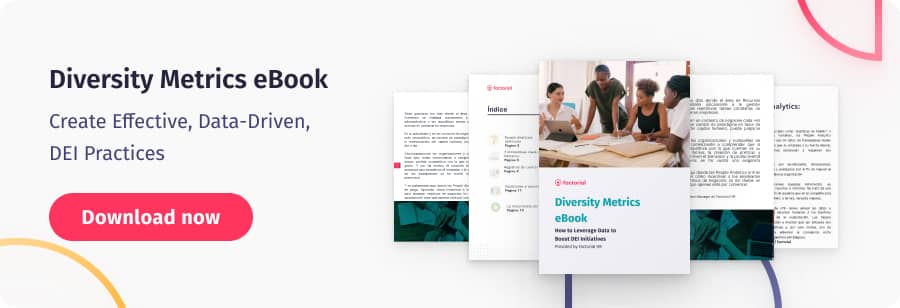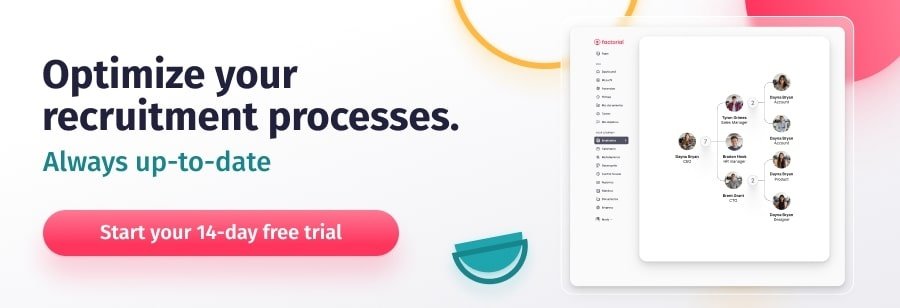Diversity and inclusion have been a hot topic over the past few years, in part due to globalization, but also because the world is changing and society is more aware of the detrimental effects of discrimination and negative bias. As a result, there is an increasing need for organizations to focus on diversity and inclusion recruitment best practices that promote inclusive hiring in order to stay competitive and attract top talent. In fact, according to a recent survey by Deloitte, 80% of participants reported that inclusion is important when choosing an employer.
With this in mind, today we are going to share 9 diversity and inclusion recruitment best practices to help you implement an inclusive hiring policy that keeps you relevant in the face of growing demands for diversity and inclusion in the workplace.
What is Diversity Hiring?
Diversity hiring, or also called inclusive hiring, is a recruitment and selection strategy used to ensure that organizations hire a diverse range of candidates from the talent pool. It is part of a wider approach, known as DEIB, which is based on the principles of diversity (employing people with a range of social identities), equity (creating systems that ensure equal access), inclusion (ensuring all voices are heard) and belonging (nurturing a sense of security so that every employee feels that they are accepted, supported, and included).
DEIB has also been referred to as DEI and D&I. No matter what you call this practice, they all promote and encourage diversity recruiting strategies. This process goes beyond simply recruiting candidates from underrepresented backgrounds for the sake of “appearing” to be diverse or complying with anti-discrimination laws. Rather, it is about creating a level playing field where all potential candidates, regardless of gender, race, ability, or socio-economic background, are given an equal opportunity in the large or small business hiring process. Take a look at the U.S. labor department’s framework to support inclusive hiring to start embracing candidates with a wide range of qualities.
Let’s review the recruitment process to ensure a fair and unbiased procedure. We will provide diversity and inclusion recruitment best practices to overcome any potential unconscious bias in your hiring process. This will help create a diversity recruiting strategy that will allow you to be open to hiring from a diverse talent pool, instead of focusing exclusively on those candidates you instinctively identify with.
But first, let’s take a look at why inclusive hiring is so important.
Why Is Inclusive Hiring Important?
According to McKinsey, one-third of companies have made real progress with diversity, especially in terms of executive hiring. However, around 50% have made little or no progress and, within that, many have even seen gender and ethnic minority representation go backwards. Organizations still have a long way to go before they can be considered truly diverse and inclusive.
Aside from being a legal responsibility, implementing a diversity recruiting strategy and utilizing D&I best practices can bring you a number of benefits to your business. Diversity hiring practices exposes you to creative and innovative workers which can transform your productivity levels and enhance your workflows.
Benefits of a diverse workplace:
- Strengthen your reputation as an equal opportunities employer, helping you attract talent in a competitive market. This helps you attract the resources, insights and perspectives you need to drive your business forward.
- Result in higher levels of productivity, innovation, and performance, boosting the bottom line of your business.
- Improve employee retention rates, further promoting your organization’s positive brand.
- Give you access to a wider talent pool, helping you find the right candidate for the job, regardless of profile.
- Protect you from claims of disparate treatment and adverse impact discrimination.
- Help you build an ethical and more sustainable business, which in turn helps you grow as a business of the future.
9 Diversity and Inclusion Recruitment Best Practices
Now that we’ve seen what inclusive hiring is and why it’s so important for your business, let’s take a look at 9 diversity and inclusion recruitment best practices. These diversity hiring best practices and recruitment tips will help you establish a reputation as an inclusive employer so that you can attract the best possible talent to your business.
Set SMART Goals
Whether you’re recruiting for manager roles, recruiting internally or externally, hiring to address an understaffing or overstaffing issue, or looking to take on boomerang employees, it’s important to make sure your inclusive recruitment objectives are clear. Without clear goals, it will be difficult for you to get to where you want to be as an inclusive employer. In fact, this is probably one of the most vital best practices for diversity recruiting.
The best way to do this is to set SMART goals. This means your objectives need to be Specific, Measurable, Achievable, Relevant, and Time-Bound.
Be precise with what you want to achieve. Are you looking to increase a specific demographic or change your entire hiring process? Will you be focusing on a certain department or the organization as a whole? What types of diversity do you want to concentrate on improving? (Gender, ethnicity, background, disabilities, etc.)
You also need to make sure the diversity and inclusion goals you set make sense in the context of your organization. What is most relevant to your team? Which diversity and inclusion recruitment best practices do you need to implement in order to reach your objectives?
Create a D&I Recruiting Strategy
Once you’ve determined what your inclusive hiring SMART goals are, you need to create a recruitment strategy to guide the rest of the diversity recruitment best practices you will be implementing in your business. This will serve as your roadmap to becoming a fairer and more diverse employer.
Aside from clearly establishing your goals, a diversity recruitment strategy defines the actions you will be taking, who will be accountable, and how you will measure success. This is the foundation of attracting, engaging, assessing, and hiring diverse talent.
Your strategy should also reflect your customer base and the community in which you operate, as this is likely to be where the majority of your potential candidates will come from. The more you focus on the diverse range of backgrounds, experiences, and perspectives in your community, the more representative your organization will be.
You should also include a full evaluation of your current hiring practices in your strategy to help you understand the current level of diversity and inclusion in your recruitment process. This will help you determine what you need to work on in order to become a more inclusive recruiter. You could even ask your current workforce what they think about your existing commitment to DEI, and how they think you can improve. Anonymous surveys can be a great tool for this.
Promote Your Employer Brand
Implementing internal diversity and inclusion recruitment best practices is all good and well, but you also need to consider external factors. How do people perceive you as a business? Do you have a reputation as a fair employer? How is your brand messaging received by the general public?
Job seekers these days have a number of tools in their belts for evaluating your reputation as an employer before they’ve even put their foot in the door. Sites like Glassdoor and LinkedIn provide a wealth of opinions posted by past employees or those candidates who didn’t make it through your recruitment process. What do they have to say about you?
The chances are, you’ve probably had at least a few disgruntled employees over the years. To combat these potentially harmful reviews, it’s important to work on improving your brand as an employer. Communicate your commitment to diversity and inclusion through as many channels as possible. Post about your initiatives on social media and show potential candidates that you value all your employees. Create a company culture that promotes work-life balance and helps employees reach the next level in their careers. A strong culture attracts talent and retains the best employees.
Create an Accessible Website
You should also make sure you create an accessible website if you don’t already have one. Use your website to promote your commitment to diversity and inclusion.
Make sure you use inclusive language and a variety of content types such as videos and downloadable information sheets. You could also use close captions for video and audio files. A good standard to follow is the Web Content Accessibility Guidelines (WCAG). These principles provide the foundation for web accessibility: perceivable, operable, understandable, and robust.
You should also make sure you state that you comply with the EEOC guidelines for diversity and hiring for inclusiveness. Use this statement in all your job advertisements, too.
Attract More Diverse Applicants
There are a number of adjustments you can make in order to attract more diverse applicants.
First of all, take a look at your recruitment team. Is it diverse? Are your recruiters representative of a range of ages, ethnic backgrounds, sexual orientations, and genders? If, for example, all your recruiters are white females between the ages of 25 and 30 then you will be much more vulnerable to unconscious bias. (more on this shortly)
What about your job descriptions? Do you use neutral and inclusive language in all your postings? Are you using any words that might communicate gender bias, for example? Wherever possible, you should also try to shift your focus from non-essential requirements to job training and transferable skills. Check out this post on writing the perfect job ad for more useful tips.
Finally, focus on promoting workplace policies that appeal to a range of people with different backgrounds. For example, you could add floating holidays to your paid time off so people of different ethnic backgrounds can spend holidays with their families.
Use a Diverse Range of Recruitment Platforms
When you define your diversity and inclusion recruitment best practices, make sure you include an analysis of the recruitment platforms that you use. If you only use certain platforms that tend to be used by specific demographics, then you are automatically limiting the diversity of your audience.
Don’t just focus on the usual job boards and referrals. Use different outreach methods to broaden your recruiting efforts and expand your candidate pool. Channels like social media can also be a great platform for reaching a broader demographic. You could also consider using a few virtual recruiting ideas to expand your geographic reach.
The following job boards can help you attract more diverse talent to your workforce:
- Diversity.com
- iHispano
- National Association of Asian-American Professionals (NAAAP)
- Fairygodboss
- Pink Jobs
Reduce Unconscious Bias
Put simply, unconscious bias is the biggest obstacle to address if you are to become a more inclusive employer.
First of all, it’s important to point out that unconscious bias is natural; everyone experiences it to one degree or another. Regardless of how objective and impartial you try to be, we are all vulnerable to certain unconscious biases and prejudices. The key is implementing strategies to help you identify and correct these biases.
As we already mentioned above, making sure your hiring panel is as diverse as possible is a great first step. Your recruitment managers should represent all ages, genders, ethnicities, abilities, etc. However, if you are a small business with a limited recruitment team then this might not be practical. There are other strategies you can focus on instead, though.
For example, you could:
- Offer your hiring managers training in diversity and inclusion. This will help them be better equipped to identify their own unconscious biases. Also, make sure they know how to conduct an interview in a standardized way that transmits your commitment to diversity and inclusion.
- Create a more standardized process with a hiring checklist that your managers need to follow at all times. Check out this hiring process checklist if you don’t already have one. Your offer letters should also be standardized. Here’s a handy employee offer letter template you can use.
- Conduct blind CV reviews (resumes that don’t include any personal details that refer to an applicant’s gender, age or ethnicity)
- Make sure your recruitment process is comfortable and accessible to all.
Use the Right Technology
Technology can be a great tool to support your inclusion hiring initiatives. The right HRIS can help you be a more inclusive employer. It can also help your business meet its overall DEI targets. This will help you create a culture of diversity and inclusion that boosts your retention levels. After all, there’s no point in promoting yourself as an inclusive employer if your working environment doesn’t match expectations.
For example, an applicant tracking system can help you increase your chances of finding the right person for the job. However, it can also help you reduce unconscious bias in your selection process. This is because candidates are selected based on algorithms and CV keywords rather than subjective opinions. You can also use a job description analysis tool to remove biased language from your job ads.
What’s more, if you choose a software solution with a hiring dashboard, then you can centralize all your data, allowing you to make more informed and objective hiring decisions. You can also use the dashboard to see which hiring tactics work well.
Track your Recruitment Diversity and Inclusion Metrics
A hiring dashboard is also useful for tracking the demographics of all your applicants. This can help you gain a better understanding of your level of diversity and inclusion. Plus, you can measure your progress towards those all-important SMART goals that we saw above. You can then see which strategies work and which don’t, then make adjustments accordingly.
There are a number of diversity metrics that will help with this. For example, retention rates per group can give you a clear indication of the success of your inclusive hiring best practices. If your minority group retention levels are going up, then you are doing something right. For more tips, take a look at this downloadable diversity metrics eBook to see which metrics you should include in your Diversity Dashboard.
Finally, once you have implemented all your diversity and inclusion recruitment best practices, you need to focus on the bigger picture. This means creating a corporate culture based on diversity and inclusion. Telling the world that you are committed to DEI is a great first step. However, what matters most is creating a culture where people of all backgrounds feel included.




